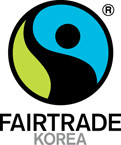| Fifth edition of impact and monitoring report puts spotlight on benefits and challenges for 1.4 million Fairtrade farmers and workers in 70 countries around the world. Producer organizations reported a 42 percent increase in Fairtrade Premium received and a 36 percent increase in sales on Fairtrade terms over 2011.
‘Monitoring the Scope and Benefits of Fairtrade, Fifth Edition (PDF),’ includes more than 120 pages of data, charts, and statistics on Fairtrade farmers and workers, and also gives summaries and links to in-depth impact studies on banana producers in Colombia, farmers and workers in Malawi, flower producers in Ecuador, women in supply chains, and more.
The growth in Fairtrade Premium resulted from a doubling of the required Premium payment in 2011 as coffee farmers confronted a difficult market. This year’s report also includes a more detailed breakdown of how producers elected to invest these funds. In general, Fairtrade small farmers invested over 80 percent of their Fairtrade Premium funds in supporting their producer organizations to grow stronger and providing services to members. Meanwhile hired labour organizations (plantations and estates) invested more in services for workers and their families.
“This growth in Premiums paid is an outstanding opportunity for farmers and workers to invest in what’s important to them,” said Harriet Lamb, Chief Executive at Fairtrade International. “And this is the key. When producers are able to choose what they invest in, according to their priorities, it’s good for the community and it’s good for businesses.”
The total number of farmers and workers grew by 15 percent to 1.4 million with roughly 61 percent of them in Africa and the Middle East. Particularly strong growth was seen in the number of farmers and workers in Asia and Oceania (22 percent growth), though the region remains the smallest in Fairtrade.
Key insights include:
•The largest proportion of total Fairtrade Premium was coffee (43 percent), Bananas (19 percent), Cocoa (11 percent), and Sugar (11 percent).
•This was the first year that Fairtrade monitoring data reflected the full impact of Fairtrade’s decision to double the Fairtrade Premium in coffee in 2011. Farmers reported a 97 percent increase on 2011.
•Fairtrade sales as a proportion of total production in small producer organizations were highest in bananas (61 percent), cane sugar (46 percent), and cocoa (46 percent).
•On the other hand, Fairtrade farmers in tea and cotton sold just 9 percent and 13 percent respectively, showing much need for improvement to drive more sales for farmers.
•The number of Fairtrade producer organizations grew by a steady 15 percent, including organizations in Jamaica, Nigeria and Timor-Leste – new countries to the Fairtrade system.
•Women make up 23 percent of total Fairtrade farmers and workers, but 47 percent of all workers on estates and plantations.
While the data show strong growth for small producer organizations, plantations and other hired labour set-ups in some product areas continued to sell a relatively small portion of their production as Fairtrade.
“There is a rich seam of data to mine here – a snapshot of Fairtrade – that allows us to learn in the future as we develop and change to improve impact for producers,” added Harriet Lamb. “In particular, the low percentage of tea sold on Fairtrade terms, especially given the number of tea famers and workers, shows room for improvement."
‘Monitoring the Scope and Benefits of Fairtrade, Fifth Edition (PDF),’ is based on data collected from the 1,139 Fairtrade producer organizations, including small producer organizations and hired labour organizations, primarily during the 2011-2012 auditing cycle. The publication of the monitoring data is part of our commitment to compliance with the ISEAL Impacts Code. The ISEAL Impacts Code requires member standards systems to develop credible monitoring and evaluation systems.
The full report and previous years' reports can be found at http://www.fairtrade.net/impact_studies.html.
|




